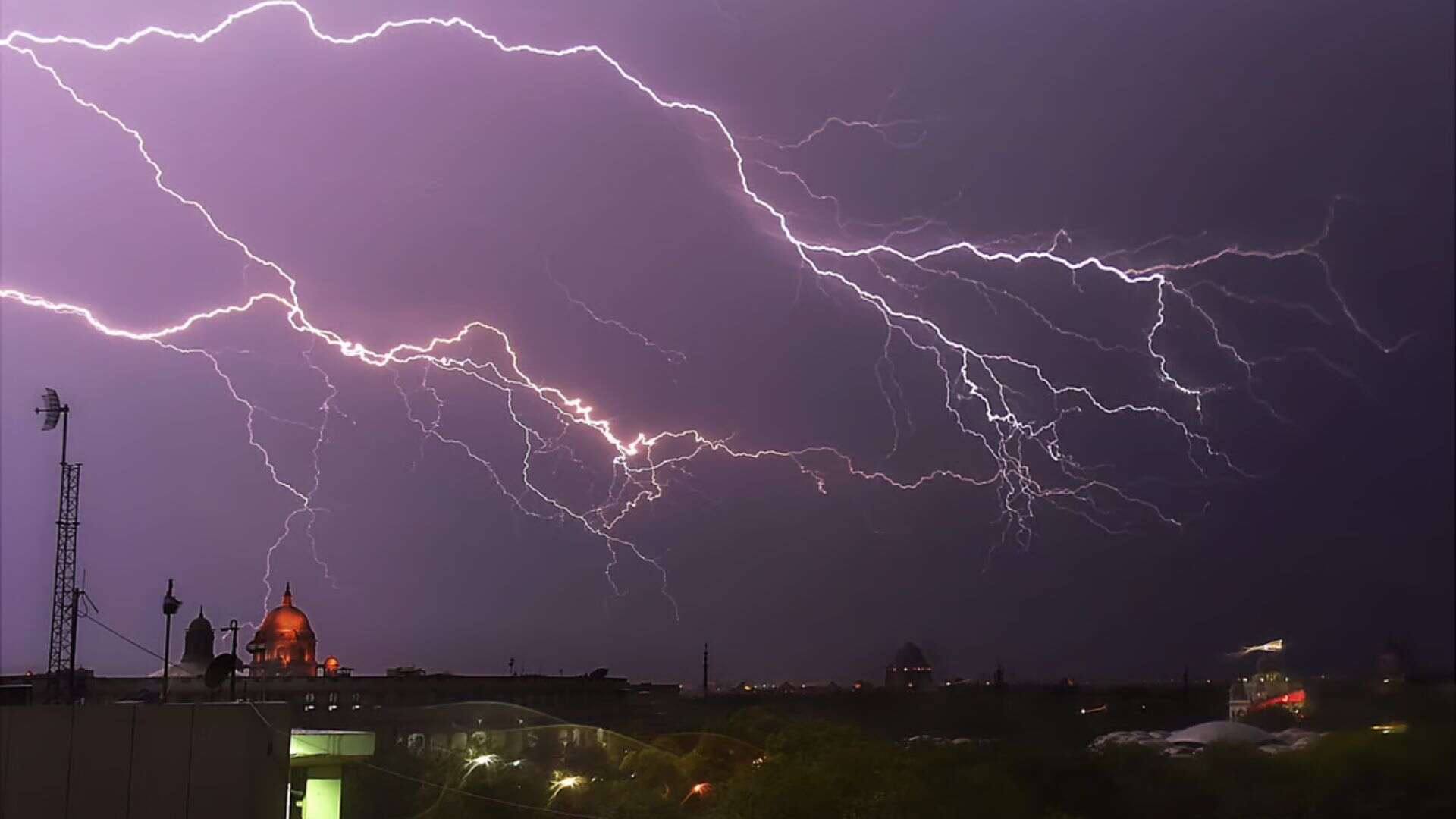A sudden dust storm caught Delhi off guard on Friday night around 9.45 pm, enveloping the capital. The storm, accompanied by strong winds and light rain, was intense.
According to reports, two individuals lost their lives, and six others sustained injuries as the powerful dust storm uprooted over 100 trees. Additionally, seventeen people were injured due to damage to buildings caused by the storm.
Delhi Police received numerous distress calls, including 152 reports of uprooted trees, 55 incidents of building damage, and 202 complaints of power outages. Authorities worked tirelessly through the night to address the aftermath of the storm.
The India Meteorological Department (IMD) reported wind speeds reaching up to 77 km/h in specific areas of the city. IMD officials cautioned about the likelihood of a similar storm hitting the city on Saturday, with rain anticipated during the night.
This is why sudden dust storm and thunder storm hit Delhi
Kuldeep Srivastava, a scientist at IMD, explained that the dust storm and thunderstorm in Delhi were caused by a convergence of factors. These included the influence of a western disturbance, easterly winds, and elevated temperatures, which collectively led to the formation of convective clouds and the accompanying strong winds.
What are thunderstorms and dust storms
A thunderstorm is defined by its lightning and thunder, which occur due to electrical discharges within a vertically growing cloud. In contrast, a dust storm is marked by turbulent winds that lift dust or sand particles to considerable heights, often causing a significant reduction in visibility.
Role of western disturbances
Western disturbances are weather systems that originate outside the tropics and affect the northwestern Indian subcontinent, particularly during winter. They bring precipitation to the region, which is vital for the Rabi crop, including wheat, a staple food. Moisture from these disturbances is transported at higher altitudes and can result in rainfall when it meets the Himalayas.
What are easterlies
The trade winds, also referred to as easterlies, are steady winds that blow from east to west in the equatorial regions of the Earth. They mainly originate from the northeast in the Northern Hemisphere and from the southeast in the Southern Hemisphere. These winds typically strengthen during the winter season and when the Arctic Oscillation is in a warm phase.
Impact on daily life and agriculture
The unexpected storm created substantial challenges for Delhi’s residents, impacting mobility due to uprooted trees and resulting traffic jams. With forecasts indicating more storms throughout the weekend, individuals had to ready themselves for possible disruptions. These storms also carry significant agricultural implications, especially for Rabi crops dependent on the rainfall brought by western disturbances.
To conclude, the dust storm in Delhi highlights the city’s susceptibility to abrupt weather shifts and underscores the significance of timely warnings issued by meteorological agencies.









